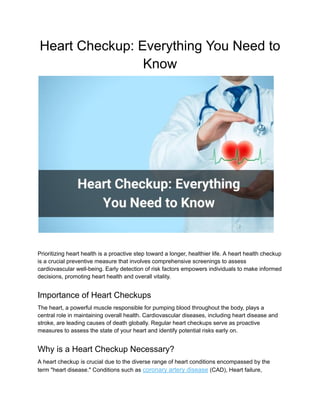Could your heart be silently enlarging without you even realizing it? A bold statement to consider is that cardiomegaly, or an enlarged heart, often goes unnoticed until it leads to severe complications. This condition is not a disease in itself but rather a symptom of underlying issues that demand immediate attention. Understanding its causes, symptoms, and treatment options can significantly improve outcomes for those affected.
An enlarged heart, medically termed as cardiomegaly, refers to the heart's increased size due to various conditions. It is crucial to recognize that cardiomegaly does not operate in isolation; instead, it results from other health concerns such as ischemic heart disease, hypertension, and valvular diseases. Hypertension, particularly when accompanied by left ventricular hypertrophy, plays a significant role in causing this enlargement. Similarly, valvular diseases like mitral regurgitation, tricuspid regurgitation, aortic stenosis, and aortic regurgitation contribute to the problem. Cardiomyopathy, whether idiopathic, alcoholic, or hypertrophic, also poses a risk. Numerous drugs are cardiotoxic, further complicating matters. These factors collectively emphasize the importance of early detection and management of cardiomegaly to prevent adverse effects on heart function.
| Bio Data | Details |
|---|---|
| Name | [Insert Name] |
| Date of Birth | [Insert Date] |
| Place of Birth | [Insert Place] |
| Career | Medical Professional specializing in Cardiology |
| Professional Information | Expert in diagnosing and treating cardiomegaly and related conditions |
| Reference Website | Cleveland Clinic |
Diagnosing an enlarged heart involves several methods, each offering unique insights into the heart's condition. The echocardiogram stands out as the most effective diagnostic tool. This painless procedure employs ultrasound technology to visualize blood movement through the heart, allowing doctors to assess the anatomical structure and functional activities of the four chambers. Additionally, it provides a clear view of the heart valves. Another critical test is the transthoracic echocardiogram, which uses ultrasound to evaluate the heart's size and performance. Complementing this, an electrocardiogram (EKG) studies the heart's electrical activity, identifying any abnormalities that might suggest an enlarged heart.
Cardiac tumors represent another area of concern within cardiology. When cancer exists elsewhere in the body alongside sudden heart problems, medical providers may suspect a heart tumor. Imaging tests become essential in determining if the cancer has metastasized to the heart. Primary heart tumors are challenging to diagnose because their signs and symptoms mimic those of other conditions. Therefore, thorough investigation and accurate diagnosis are paramount.
The prognosis for someone living with an enlarged heart varies based on the underlying cause and severity of the condition. Heart failure, a potential consequence of cardiomegaly, can lead to fluid accumulation in the body. If this fluid backs up into the lungs, breathing difficulties may arise. Furthermore, an enlarged heart can disrupt normal anatomy, causing valve dysfunction and resulting in a backflow of blood. This issue manifests audibly as a heart murmur, detectable during a physical examination.
Cardiomegaly encompasses different types of heart enlargement, affecting either the entire heart or specific parts. It can be transient or permanent, often linked with heart muscle thickening (hypertrophic cardiomyopathy) or cardiac dilation (dilated cardiomyopathy). Recognizing these distinctions aids in tailoring appropriate treatments. For instance, an EKG measures the heart's activity through electrical waves. Abnormally large wave amplitudes might indicate an enlarged heart, pointing towards underlying heart muscle defects or high blood pressure effects.
Treatment approaches for cardiomegaly depend heavily on addressing the root cause. Lifestyle modifications, medication, and sometimes surgery form the backbone of treatment strategies. Patients must adhere to prescribed medications, engage in regular exercise tailored to their condition, and maintain a healthy diet. Surgical interventions might be necessary in severe cases, especially when dealing with structural abnormalities or persistent heart failure symptoms. Continuous monitoring and follow-up care ensure timely adjustments to treatment plans, optimizing patient outcomes.
In conclusion, understanding cardiomegaly requires a comprehensive approach encompassing diagnosis, treatment, and ongoing management. By staying informed about the latest advancements in cardiology and adhering to professional recommendations, individuals can manage their condition effectively and lead fulfilling lives despite having an enlarged heart. Awareness and proactive healthcare remain vital components in combating cardiomegaly and its associated challenges.



